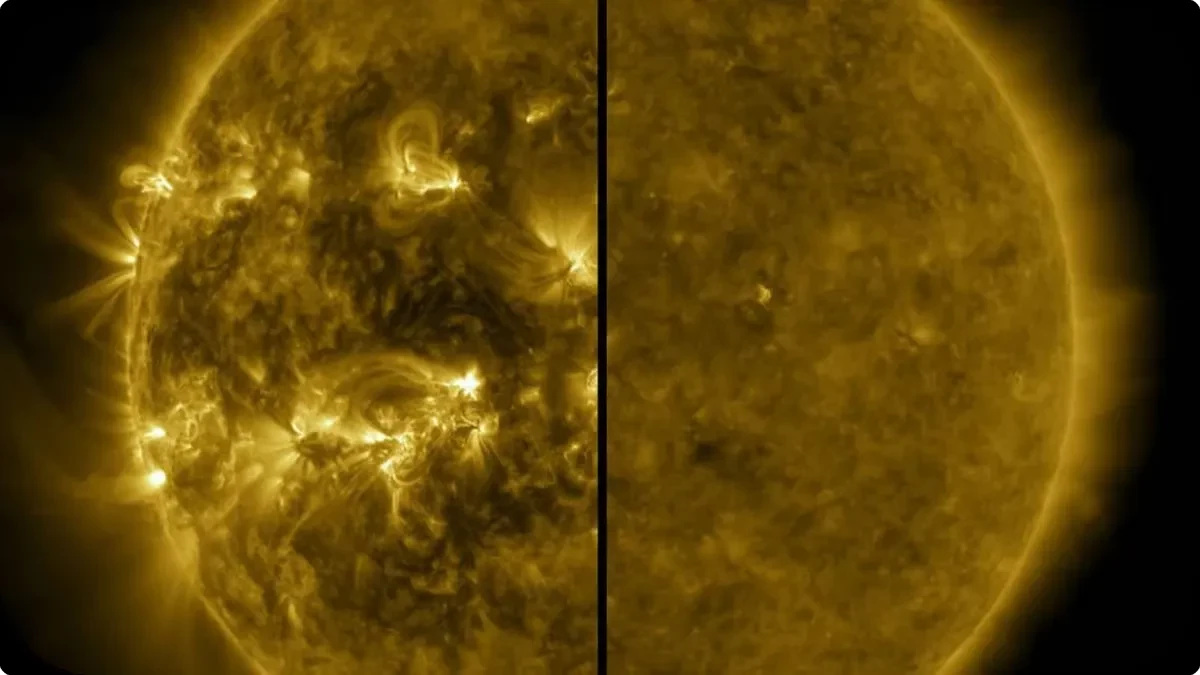Solar Chaos Coming Soon

At first glance, the sun appears as a tranquil, steady beacon in the sky. However, a closer look reveals a star in constant turmoil, oscillating between states of calm and chaotic plasma activity in a cycle that reshapes its surface and magnetic field.
Every 11 years, the sun undergoes a dramatic transformation. Its magnetic field, having become as twisted as an overwound bundle of elastic bands, abruptly reverses, swapping its magnetic poles. This event is the climax of a process leading to heightened solar activity, including the ejection of massive plasma blobs, the formation of vast dark spots, and the release of intense radiation streams.
This phase of increased solar behavior, known as the solar maximum, can trigger solar storms capable of disrupting communication systems, damaging electrical grids, affecting living organisms (astronauts in particular), and endanger satellites.
Recent observations indicate that the upcoming solar maximum might arrive earlier and with more intensity than previously anticipated. Although scientists had forecasted the peak of the current solar cycle to occur in 2025, a surge in sunspots, solar storms, and unusual solar events now suggests that the solar maximum could begin as early as the end of this year.
The solar cycle transitions from a solar minimum, a period of low solar activity, to a solar maximum and back every 11 years. The reasons behind the duration of these cycles remain a mystery, despite their consistent tracking since the first recorded Solar Cycle 1 between 1755 and 1766. The ongoing cycle, Solar Cycle 25, started in December 2019, as confirmed by NASA.
The root of the sun’s cyclical changes lies in its magnetic field, explains Alex James, a solar physicist. During the solar minimum, the sun’s magnetic field is strong and well-ordered, effectively suppressing solar activity by keeping the sun’s plasma contained. Over time, however, this magnetic field becomes entangled, leading to a weakening of its strength and a subsequent increase in solar activity. This activity is marked by the emergence of coronal loops — massive, magnetized structures on the sun’s surface — and the occurrence of solar flares and coronal mass ejections as the magnetic field realigns.
Following the peak of this activity, the sun’s magnetic field undergoes a complete reversal, marking the end of the current cycle and the beginning of a new solar minimum, thus continuing the cycle of solar transformation.
While this is a regular event that happens every 11 or so years, I am very excited for the upcoming solar maximum. The quality of images we have been able to take of the sun over the last few years has gotten so much better. I think we will get a whole new wealth of amazing photographs of our sun in its most active time.
Related: The Sun, Like Never Seen Before